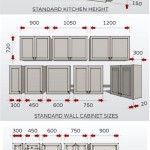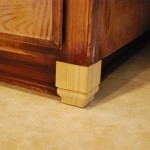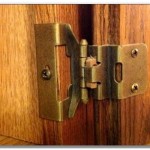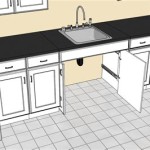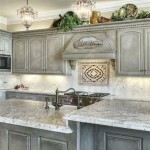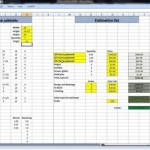Chinese Kitchen Cabinets Made In China: A Comprehensive Guide
The kitchen is often considered the heart of a home, and kitchen cabinets are a crucial component in both its functionality and aesthetics. Increasingly, homeowners and contractors are turning to China for sourcing kitchen cabinets, drawn by the promise of competitive pricing and diverse design options. Understanding the nuances of Chinese-made kitchen cabinets requires careful consideration of materials, manufacturing processes, quality control, and the logistical aspects of importing.
This article aims to provide a comprehensive guide to Chinese kitchen cabinets, offering insights into their advantages, disadvantages, and key factors to consider when making a purchasing decision. The goal is to equip readers with the knowledge necessary to navigate the market effectively and make informed choices that align with their budget and design preferences.
Price Competitiveness and Value Proposition
One of the primary drivers behind the popularity of Chinese kitchen cabinets is their competitive pricing. China's robust manufacturing infrastructure, coupled with lower labor costs, enables manufacturers to produce cabinets at a significantly lower price point compared to those manufactured in North America or Europe. This cost advantage can translate into considerable savings for homeowners undertaking kitchen renovations or new construction projects.
However, the lower price should not be the sole determining factor. It is essential to consider the overall value proposition, which includes not only the initial cost but also the quality of materials, construction techniques, and the longevity of the cabinets. A seemingly inexpensive option might prove to be more costly in the long run if it requires frequent repairs or replacement due to inferior materials or workmanship.
Furthermore, it is crucial to factor in the additional costs associated with importing cabinets from China. These costs can include shipping fees, customs duties, inspection fees, and potential delays due to unforeseen circumstances. A thorough cost analysis should be conducted to ensure that the perceived savings are not eroded by these additional expenses.
The value proposition also encompasses the level of customer service provided by the supplier. A reliable supplier will offer clear communication, timely responses to inquiries, and assistance with resolving any issues that may arise during the ordering and delivery process. This support can be invaluable, especially for individuals who are unfamiliar with the intricacies of international trade.
Material Selection and Manufacturing Processes
The quality of kitchen cabinets is heavily dependent on the materials used in their construction. Chinese manufacturers offer a wide range of options, from solid wood to plywood, MDF (Medium-Density Fiberboard), and particleboard. Each material has its own set of advantages and disadvantages in terms of durability, moisture resistance, cost, and aesthetic appeal.
Solid wood cabinets are generally considered the most durable and visually appealing option, but they also come with a higher price tag. Common wood species used include oak, maple, cherry, and birch. It is important to verify the origin and quality of the wood to ensure that it is properly kiln-dried and free from defects.
Plywood is a popular alternative to solid wood, offering good strength and stability at a more affordable price. High-quality plywood is less prone to warping and cracking than solid wood, making it a suitable choice for humid environments. Look for plywood with multiple layers and a smooth, consistent surface.
MDF is an engineered wood product made from wood fibers and resin. It is a cost-effective option that is relatively smooth and easy to paint. However, MDF is not as moisture-resistant as solid wood or plywood and can swell or delaminate if exposed to water.
Particleboard is the least expensive option, but it is also the least durable and moisture-resistant. It is typically used for the core of cabinet boxes or for non-structural components. Particleboard is susceptible to damage from water and can sag or crumble over time.
The manufacturing processes employed by Chinese cabinet manufacturers also play a crucial role in determining the quality of the finished product. Modern factories utilize advanced machinery and automation to ensure precision and consistency. Look for manufacturers that adhere to strict quality control standards and employ skilled craftsmen.
The finishing process is another important aspect to consider. A durable and aesthetically pleasing finish can enhance the appearance and longevity of the cabinets. Common finishing options include paint, stain, lacquer, and laminate. It is important to ensure that the finish is applied evenly and is resistant to scratches, stains, and fading.
Navigating Quality Control and Import Logistics
One of the biggest concerns when sourcing kitchen cabinets from China is quality control. It is essential to implement measures to ensure that the cabinets meet the required standards and specifications. This can involve conducting factory audits, inspecting samples, and hiring third-party inspection agencies to oversee the production process.
A factory audit can provide valuable insights into the manufacturer's capabilities, quality control procedures, and compliance with ethical labor practices. It is important to choose a manufacturer that has a proven track record of producing high-quality cabinets and adheres to international standards.
Inspecting samples before placing a large order is crucial to verify the quality of materials, construction techniques, and finishing. Pay close attention to the details, such as the alignment of doors and drawers, the smoothness of the finish, and the strength of the hardware.
Hiring a third-party inspection agency can provide an unbiased assessment of the cabinets before they are shipped. These agencies typically conduct on-site inspections to verify that the cabinets meet the agreed-upon specifications and are free from defects.
Navigating the import logistics can be a complex process, especially for those who are unfamiliar with international trade. It is important to work with a reputable freight forwarder who can handle the shipping, customs clearance, and delivery of the cabinets.
The freight forwarder will be responsible for arranging the transportation of the cabinets from the factory to the port of origin, coordinating with customs officials, and ensuring that all necessary paperwork is in order. They will also handle the shipping of the cabinets to the port of destination and arrange for their delivery to the final destination.
It is important to be aware of the customs duties and taxes that may be levied on the imported cabinets. These charges can vary depending on the type of cabinets, the country of origin, and the destination country. The freight forwarder can provide guidance on these matters and assist with the payment of duties and taxes.
Shipping delays are a common occurrence in international trade, so it is important to factor in extra time when planning a kitchen renovation or new construction project. Unforeseen circumstances, such as port congestion, weather disruptions, or customs delays, can cause significant delays in the delivery of the cabinets.
Finally, it is crucial to have a clear understanding of the supplier's warranty policy. A reputable supplier will offer a warranty that covers defects in materials and workmanship. Be sure to read the warranty carefully and understand the terms and conditions before placing an order.
In addition to the above considerations, it's important to understand the specific grading and certifications of materials. For example, CARB (California Air Resources Board) Phase 2 compliance is a crucial standard for formaldehyde emissions, as it regulates the amount of formaldehyde that can be emitted from composite wood products. Ensuring that the cabinets meet this standard contributes to a healthier indoor environment.
Another significant element is the hardware used in the cabinets. Hinges, drawer slides, and handles are critical components that affect the functionality and longevity of the cabinets. Opting for high-quality hardware from reputable brands can significantly improve the overall performance and lifespan of the kitchen cabinets. It is wise to inquire about the brand and specifications of the hardware used, ensuring that it meets the desired level of quality and durability.
Furthermore, design customization options should be carefully considered. While some suppliers may offer standard designs, others provide a range of customization options, allowing homeowners to tailor the cabinets to their specific needs and preferences. This could include adjusting the dimensions of cabinets, selecting different door styles, or adding specialized features like pull-out shelves or spice racks. Understanding the extent of customization options available and the associated costs is crucial for making informed decisions that align with the overall kitchen design vision.
Finally, effective communication with the supplier is paramount throughout the entire process. Clearly articulating design requirements, quality standards, and delivery expectations is essential for ensuring that the cabinets meet the desired specifications. Establishing a reliable communication channel and promptly addressing any concerns or questions that may arise can help to prevent misunderstandings and ensure a smoother transaction.

Chinese Kitchen Cabinets Whole House Customization China Modern Including Quartz Countertop Made In Com

Kitchen Cabinet

Kitchen Cabinet

Chinese Kitchen Cabinets Whole House Customization China Modern Including Quartz Countertop Made In Com

Chinese Kitchen Cabinet Customization China Modern Cabinets Restaurant Equipment Made In Com

How To Buy And Import Kitchen Cabinets From China Foshan Sourcing

China Luxury Kitchen Cabinet For Munch Oppein

How To Buy And Import Kitchen Cabinets From China Foshan Sourcing

Full Solution Of China Kitchen Cabinets For Villa House Apartments

American Cabinets Versus Chinese
Related Posts



